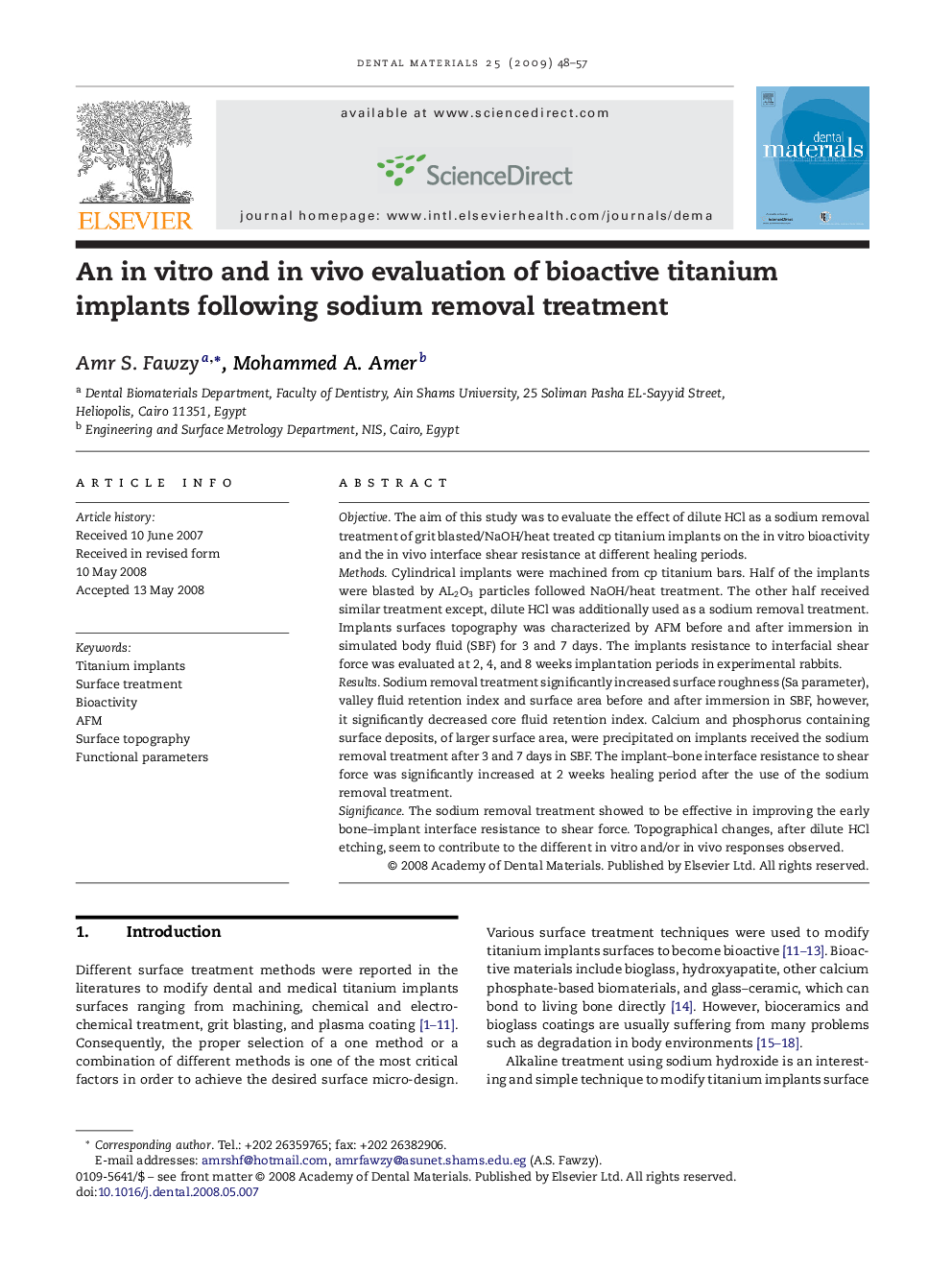| Article ID | Journal | Published Year | Pages | File Type |
|---|---|---|---|---|
| 1422516 | Dental Materials | 2009 | 10 Pages |
ObjectiveThe aim of this study was to evaluate the effect of dilute HCl as a sodium removal treatment of grit blasted/NaOH/heat treated cp titanium implants on the in vitro bioactivity and the in vivo interface shear resistance at different healing periods.MethodsCylindrical implants were machined from cp titanium bars. Half of the implants were blasted by AL2O3 particles followed NaOH/heat treatment. The other half received similar treatment except, dilute HCl was additionally used as a sodium removal treatment. Implants surfaces topography was characterized by AFM before and after immersion in simulated body fluid (SBF) for 3 and 7 days. The implants resistance to interfacial shear force was evaluated at 2, 4, and 8 weeks implantation periods in experimental rabbits.ResultsSodium removal treatment significantly increased surface roughness (Sa parameter), valley fluid retention index and surface area before and after immersion in SBF, however, it significantly decreased core fluid retention index. Calcium and phosphorus containing surface deposits, of larger surface area, were precipitated on implants received the sodium removal treatment after 3 and 7 days in SBF. The implant–bone interface resistance to shear force was significantly increased at 2 weeks healing period after the use of the sodium removal treatment.SignificanceThe sodium removal treatment showed to be effective in improving the early bone–implant interface resistance to shear force. Topographical changes, after dilute HCl etching, seem to contribute to the different in vitro and/or in vivo responses observed.
